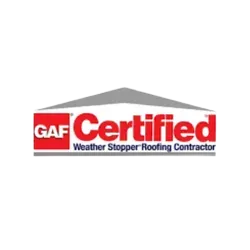Signs Your Roof Needs Repair
Your roof works quietly, shielding your home from rain, snow, wind, hail, and harsh sunlight. It stands up to seasonal temperature swings, ice buildup, heavy downpours, and summer heat, all without much thought from the homeowner. While it may seem like it can last forever, every roof eventually wears down. Recognizing early signs of trouble is the key to avoiding expensive damage and preserving your home’s structure.
One of the most visible warnings is water stains on ceilings or walls. These stains may appear as faint discoloration, brown rings, or dark patches after a heavy rainstorm. While the leak might seem to be directly above the stain, water often travels along beams, trusses, or drywall seams before settling, making the actual source difficult to pinpoint. Even a small leak can damage insulation, rot wooden framing, and create a breeding ground for mold, which can impact indoor air quality.
Another sign is shingles that are curling, cracked, or missing entirely. Asphalt shingles are designed to shed water efficiently and to withstand years of sun exposure. When they are damaged, water can seep underneath them, weakening the roof deck and sometimes warping the underlying plywood. Missing shingles also expose the materials below to UV rays, which can cause them to dry out and crack. Left unaddressed, this type of damage can spread across the roof and shorten its lifespan dramatically.
If you clean your gutters and find a noticeable amount of granules, this is another red flag. These granules are what give asphalt shingles their texture and protect them from ultraviolet light. A loss of granules means the shingles are wearing thin and will be more vulnerable to cracking in hot weather or becoming brittle in cold temperatures. This kind of wear is often a sign that the roof is approaching the end of its serviceable life, especially if the home is over 15 years old.
Roof sagging is an issue that should never be ignored. A dip or uneven surface often points to damage in the roof deck or supporting structures. This can happen from long-term water damage, excessive weight from snow or ice, or materials that have weakened due to age. A sagging roof is more than a cosmetic concern; if not repaired promptly, it can lead to structural failure that affects the walls, ceilings, and even the foundation.
While some warning signs are visible from the ground, others are not. A professional roof inspection is the best way to find problems that might be hidden from view, such as damaged flashing around chimneys and vents, deteriorated sealant along seams, or small punctures caused by windblown debris. Annual inspections, or inspections after major storms, help ensure small issues are addressed before they become bigger problems.
Changes in your home’s energy bills can also be linked to roof problems. If your heating or cooling costs have risen sharply, air may be escaping through gaps in the roof or attic. Poor ventilation or insufficient insulation can make these problems worse, allowing heat to escape in winter or enter in summer. Over time, this not only drives up utility costs but also stresses your HVAC system.
Storms are a common cause of sudden roof damage. High winds can lift shingles, hail can create dents or cracks, and falling branches can puncture the roof’s surface. After severe weather, it’s important to check for visible signs of damage like missing shingles, bent flashing, or debris buildup. Even if everything appears fine from the ground, hidden damage could still exist, making a professional check-up worthwhile. It is always recommended to contact a local, reputable roofing contractor for an inspection before contacting insurance to confirm if enough damage is present to warrant filing a claim or not.
Sometimes, the first instinct is to ignore minor issues, especially if the roof looks mostly intact. However, small leaks can quickly grow. What begins as a simple patch repair can escalate into a full replacement if left unattended. Water damage rarely stays contained, and once moisture infiltrates a home, it can spread through insulation, down walls, and into flooring.
Ignoring small roof problems today can lead to thousands of dollars in structural damage tomorrow.
Maintaining your roof is not just about preserving shingles. It’s about protecting the entire building envelope, from the attic insulation to the foundation. Water intrusion can travel down walls, compromise electrical systems, and even cause basement flooding if it channels into the wrong places.
A well-maintained roof can last a long time, but that longevity depends on regular upkeep. Paying attention to the signs and taking quick action when problems arise means watching for stains, monitoring shingle condition, checking gutters, and scheduling professional inspections regularly. By doing so, you extend the lifespan of your roof, protect your home’s value, and ensure your family stays safe and dry no matter the weather.
Blog Post Synopsis
Common signs of roof trouble:
- Water stains on ceilings or walls → often caused by hidden leaks.
- Damaged or missing shingles → allow water to penetrate and shorten roof life.
- Granule loss in gutters → indicates aging shingles and reduced UV protection.
- Roof sagging → signals structural weakness and potential collapse.
- Rising energy bills → may point to poor insulation, ventilation, or gaps in the roof.
- Storm damage → even minor wind or hail can create hidden problems.
Why inspections matter:
Annual or post-storm professional inspections can detect issues like damaged flashing or sealant before they escalate. Ignoring minor problems can lead to major structural damage, high repair costs, and reduced home value.
✅
Key takeaway:
Regular maintenance and quick action when issues arise
extend roof lifespan, protect your home’s structure, and prevent expensive repairs. A healthy roof safeguards the entire building—from attic to foundation.







